Book reviews
publicité
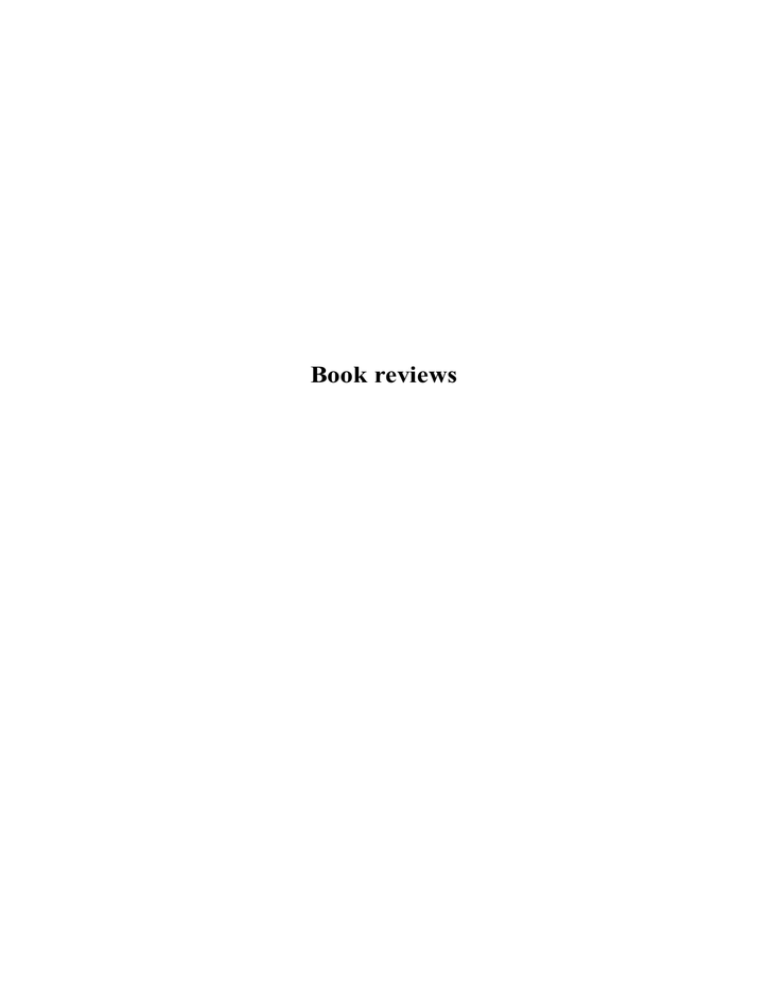
Book reviews 192 Book reviews 193 Book reviews La joie du tragique dans la philosophie contemporaine Abdelaziz Ayadi, La philosophie claudicante. Humanisme tragique et joie de la finitude (L’Harmattan, Paris, 2011) Camelia GRĂDINARU Abdelaziz Ayadi est l’auteur de plusieurs ouvrages philosophiques publiés en langue arabe, et tels que Savoir et pouvoir chez Michel Foucault (1994), Le problème de la liberté et la vertu du sens chez Maurice Merleau-Ponty (2004), Éthique de la mort et du bonheur (2005), La philosophie de l'agir (2007), ainsi qu'en langue française, Philosophie nomade. Un diagnostic de notre temps (2009). Il est professeur à l'université de Sfax (Tunisie) ; il est connu aussi comme le traducteur en arabe des oeuvres de Maurice Merleau-Ponty, de Paul Ricoeur et de Gilles Deleuze. Le travail apparu récemment à l’Harmattan offre des ouvertures risomatiques profondes vers la culture philosophique contemporaine et établit une continuité avec les préoccupations fondamentales de l’auteur. Quoique le vocabulaire phénoménologique et les auteurs consacrés de ce domaine y prévalent, cet ouvrage réussit à ne pas diminuer l’amplitude du discours et de ses mises. Nous avons donc un essai philosophique soutenu, bien structuré et entretenu par la conversation que Abdelaziz Ayadi réalise d’une manière naturelle (et même avec délicatesse, on pourrait dire) avec quelques unes des plus pénétrantes voix de la philosophie (Merleau-Ponty, Nietzsche, Ricoeur, Deleuze, Unamuno, Sartre, Heidegger etc.). Cette toile intertextuelle est réalisée avec subtilité, de sorte qu’elle soutienne l’échafaudage théorique des développements de l’auteur, sans se transformer jamais dans un simple commentaire. L’écriture personnelle de l’auteur est, de cette façon, mise en évidence agréablement, dans le flux harmonieux du texte et conduit constamment vers la problématisation et la réflexion. Les opinions auctoriales ne sont pas livrées « toutes faites » mais elles se font révéler à travers un procédé similaire à la maïeutique de Socrate, stratégie qui inclut volontairement le lecteur dans le processus de production et d’obtention de sens. Comme effet pragmatique, le désir de lecture se trouve accru, tandis que l’implication et la participation du récepteur aux tourments philosophiques de l’auteur représente un bénéfice dans l’éternelle mise en relation que l’écrivain fait avec les destinataires de son message, en dehors des couvertures du livre. Même l’ambiguïté de la texture de l’être semble transparaître dans l’utilisation de l’interrogation philosophique, dans le soutien de la dimension problématique de la philosophie et dans l’exigence appliquée à son propre travail, afin d’éviter tant les réponses dogmatiques, fixées que le scepticisme contraire. Tout en généralisant et en anticipant, nous pouvons dire que son écriture constitue elle-même une écriture tragique dans son sens « joyeux », dans la mesure où prévalent la problématicité, la critique, le sens interrogatif, l’émerveillement, l’abandon des relations causales et linéaires etc. D’ailleurs, l’auteur lui-même se confesse : « Loin de se poser en justicier ou de poser au cavalier de la vision apocalyptique, notre questionnement est tout simplement la recherche du sens tragique » (p. 8). 194 Book reviews Sans entrer dans le détail des analyses réalisées, un premier accent est donné par la réponse à l’interrogation « quelle est la modalité dont Abdelaziz Ayadi interprète le tragique ? ». De cette façon, la démarche qu’il avait faite n’est pas une recherche sur la tragédie comme genre littéraire ou un retour à l’ethos tragique des Grecs, à l’héroïsme du héros classique et au caractère exceptionnel de sa vie. Ces éléments sont évoqués sur le fond de l’analyse, mais ils n’y ont pas une teinte dominante. Ce qui est plus éloquent est l’observation du «degré de présence ou d’absence du tragique dans notre vécu quotidien» (p. 5), la mise en évidence du tragique contemporain né de la confrontation d’un individu (ou d’un groupe ou d’une civilisation) avec son altérité radicale, mais aussi au tragique «de l’existence elle-même comme exception et singularité dans son infime complexité» (p. 187). Cette manière d’aborder le problème n’appartient pas quand même au nihilisme, elle ne dramatise pas, elle n’est pas l’expression d’une crise, « le symptôme dramatique » ou « pathologique » d’un « diagnostic pessimiste de notre temps ». Le tragique est plutôt une catégorie éthique, qui tient à « agir » et à « dire ». Si la place du tragique est le paradoxe, « la volonté tragique est volonté du meilleur » (Marcel Conche), mais « faire toujours son mieux, c’est alerter la mémoire vive et non pas celle du ressentiment, appeler au souffle de l’imagination qui s’ouvre à l’insolite et même à l’abrupt, maintenir l’interrogation comme exclamation que ne réduit aucune rationalité calculatrice, tenir en éveil comme un éperon le désir d’aller toujours plus loin » (p. 11). Le problème du tragique a ouvert ainsi à l’auteur la voie des interrogations fondamentales sur l’homme, la finitude, le contingent, l’imagination, l’éthique, la souffrance, la mémoire etc., discutées dans des sections condensées (Tragique ou tristesse de la finitude ?, Souffrance et jouissance, Espace de la mémoire, Tragique et métaphysique, L’éthico-politique et le paradoxe tragique, Humanisme tragique, Le symbole et le travail de l’imagination, Le tragique de la philosophie claudicante) qui composent, par des relations qui semblent souvent sous-jacentes, l’image suggestive du tragique de la philosophie claudicante. L’essai conduit ainsi vers une discussion sur la crise du sens que la métaphysique assume et vers l’analyse de la philosophie dans son ensemble, telle qu’elle est surprise dans la perspective des fragilités internes et des critiques externes. L’auteur n’aime pas discuter dans les termes de la fin de la philosophie, mais dans les termes de la vigilance, de la lucidité, du manque d’illusions, de l’inclusion des types de violence et d’oppression actuelles à l’intérieur de son discours. L’image/la métaphore du claudicant apparaît comme très suggestive tant pour avoir surpris ces hypostases, comme pour avoir dessiné le tragique, car même « La claudication de la philosophie est son tragique » (p. 180), reprenant et renouvelant la précision que le tragique n’est pas seulement une catégorie abstraite avec laquelle jonglent les philosophes, mais c’est la réalité de tout homme rongé par des contradictions, par le conflit entre les manières d’être, entre les modalités axiologiques ou les styles d’action. La claudication n’est donc pas un handicap mais une vertu, elle n’est pas une infirmité, mais, considère Abdelaziz Ayadi, elle est même une manière de fonctionnement de la philosophie, « la marche par laquelle la philosophie parcourt les distances » (p. 174). C’est sûr, cette interprétation de la claudication se soutient dans la mesure où la philosophie n’est pas conçue comme doctrine salvatrice, système fermé, recueil de réponses définitives aux questions etc. : « La claudication de la philosophie est ce par quoi elle apprend à voir le sens qu’ouvre la vie et rompt la mort, la liberté que ponctuent les échecs mais que n’épuisent pas les violations. Et ceux qui calomnient le tragique de la claudication ne contestent que l’exubérance d’un surplus débordant qu’on ne peut apprivoiser» (p. 183). Book reviews 195 L’itinéraire proposé par Abdelaziz Ayadi est, de cette manière, un itinéraire qui « parle » à ceux intéressés par la philosophie, mais aussi à ceux qui sont en train de chercher des interrogations adéquats pour surprendre les essences (de l’homme, de la finitude, de la philosophie). L’amplitude des problèmes, la lucidité et l’engagement des perspectives comme l’écriture « maïeutique » sont seulement quelques arguments qui viennent recommander cette lecture. 196 Book reviews From written text to the online, a better insight into weblog technicalities Greg Myers, Discourse of Blogs and Wikis (Continuum International Publishing Group, London/New York, 2010) Georgiana ALEXANDRESCU-FIERARU In times when the virtual space has gained much of our lives, with tentacles spreading from blogs to wikis and to social networks, one could believe that there is no domain left that has not gone the online way. And yet, the analysis of language in use still lacks any consistent interest for the area. What Greg Myers wishes to achieve is the emphasis of some features and functionalities that blogs and wikis own, which could make them valuable tools for data mining. The main statement behind this attempt is that, in the case of blogs and of online-posted material in general, any prerequisite normally taken into account becomes debatable, since novelty brings about changes to the text. Hence, the introductive chapter begins by enumerating some characteristics of the online medium, some of which can have considerable impact on the interpretation of data. Intertextuality, the local instability, ownership, a different focus on the audience and the unclear distinction between opinion and facts are but a few of the novelties the virtual space claims itself to. Further on, the author reiterates the idea that blogs and wikis are significant for linguists (and sociologists or political scientists likewise) not only due to their specific form or content, but rather for the ways in which they help to forge identities and to create genuine communities. The third chapter comes to shed light upon the intertext in blogging, by explaining how the massive amount of linking encountered shifts the traditional perspective radically. In other words, if academic writing as we know it adheres to specific rules regarding the structure of the text, blogs and wikis defy all convention. As an example, their whole mechanism relies on a network of sources whose identities are only unveiled provided one clicks the underlined highlighted text. The purpose of these unknown entities is to – paradoxically – provide evidence, give credit to the authors, add dynamism and sometimes to incite to action – the purchase of a product or the support of a certain cause. The imperatives of the gricean principles are, nevertheless, inherent, since all postings are true, relevant, concise and clear. Their flouting would be nothing than the death of the blog and its replacement with reliable, trustworthy sources. The fourth chapter emphasizes the different functions certain linguistic elements receive in the economy of the blog. In the text as we know it, pronouns and deixis are associative of space and time coordinates. In blogs, however, time and space become very relative concepts. In consequence, difficulty arises for the researcher eager to pin down a stable set of features for his data corpus. Deixis and pronouns serve the scope of better identifying the author, of justifying certain opinions or actions on a cultural basis and of standing as constant reminders of the unfolding of the ”narration”. Likewise, alluding to ”blogging” time (as illustrated during the fifth chapter) can give news value to information, tell stories, recall the past and imagine hypothetical events. The “time-stamp” concept the author introduces is of crucial importance in the case of websites or weblogs providing Book reviews 197 information on the latest political scandal or the “they’re happening right now” presidential elections. Audience engagement is one of the main characteristics that differentiate blogs from text in its traditional form. Of course, traditional authorship always implicitly assumes the presence of the reader to which the text, the opus is addressed. What the blog does is to use a wide range of rhetoric devices that can make readers feel included in a group and constantly talked to. Firstly, the author notes, the audience can be made as such in multiple ways. People that share the same interests may read posts on their subject of interest, may identify to other readers simultaneously going through the same materials and can, ultimately, intervene in the ensemble of the text by expressing their opinion. Secondly, direct address and pronouns are other means of appealing to the audience. The second person “you” not only accounts for politeness, it also makes sure that nobody is left aside. Similarly, questions establish a direct connection to the readers. “What are your thoughts on the new censorship deal?” is a brief example the author uses to demonstrate how easily a well-reputed blogger triggers chain reactions on a certain topic. Directives come in when action is expected on the side of the audience. “Sign up now!”, ”Note the Pay Pal button at the upper right” or ”Do your part to make all this noteworthy!” are illustrative of how bloggers engage their audience into different, marginal issues. Another important issue at stake is how not to offence the other when criticizing his/her remark on a certain theme. The absence of direct visual contact during interaction determines greater interest for resorting to politeness strategies. Words such as “maybe”, phrases such as “you might want to be more careful when it comes to…” and “I don’t want to sound cynical, but…” are used to avoid conflictive talk. The seventh chapter brings us closer to another important part of text analysis – stance. The three types of stance normally encountered in a text - epistemic, attitudinal and stylistic – find themselves a correspondent on the World Wide Web. Attitudinal and stylistic stances are the ones most commonly encountered and sometimes the latter may even trigger the former (example: certain things written in italics or in bold may attract attention towards the author’s attitude by simultaneously inviting for further action on the part of the reader). Reported speech, rhetorical questions, irony and conversational devices are but a few of the mechanisms stance deploys for its manifestation. The eighth chapter introduces us to one of the most disputed issues when it comes to the online medium – the uncertainty of the source. As the author believes, bloggers can mark their statements of fact as based on induction, deduction, hearsay and belief, resorting to many types of stance markers. Not rarely do bloggers need to read consistent material from outer sources before actually posting conclusions of their own. One inevitable question arises: How does one know that what he reads on a blog is true? To the most cynical, the author answers in a very pertinent manner: in the case of academic writing authority comes from journal citations, institutional names and awards, as well as job titles. Similarly, blogs acquire their prestige by the unanimous recognition of those considered to be authorities inside the virtual community. Very often, they are the same people whose writings are considered academically accurate offline. Famous journalists, competent economists or sociologists venture into this quest for the mere pleasure of dramatically expanding their audiences. The ninth and tenth chapters of the book are mainly illustrative, as they present us with a testimony of how text is born in the virtual world; the example chosen is that of Wikipedia, an impressive token of worldwide collaboration. The History pages of 198 Book reviews Wikipedia give us a glimpse of the whole process of creation of an article – addition, changing, formatting, and proofreading – but also vandalism and reversion. It all starts with a “stub” – the most basic level of an article – posted by one editor and slowly expands on grounds of common knowledge, shared by volunteer editors around the world. Proofreading and formatting are performed by the same editors who have to counteract virtual vandalism (malicious and sometimes obscene comments inserted by anonymous users into wikipedian articles). A perpetual fight needs to be undergone against those who misinterpret the freedom of speech the internet permits. Myers’ book can easily be taken as a “step-by-step” guide to virtual text. What blogs look like, what their functionalities are, how they appeal to audiences – all is presented clearly, for “dummies”, always in parallel to the classical text. What is most stunning about this whole endeavour is that, despite being written in a very concise manner, it manages to convince both the skeptical and the a-technical of the numerous possibilities the “virtual” approach holds. This is why his book is highly recommended for “all audiences’ use”. 199 Book reviews A Global View of British and International Political Discourse Paul Chilton. Analysing Political Discourse: Theory and Practice (Routledge, London, New York, 2004) Sorina CHIPER Paul Chilton’s book Analysing Political Discourse: Theory and Practice is a detailed analysis of the political discourse used in British and international political contexts. It addresses specialists in both linguistics and politics, and tackles political issues of current relevance from a synchronic and interdisciplinary perspective. Starting from classical understandings of politics and rhetoric, i.e. from Aristotle and Cicero, it provides a brief overview of how the study of language has evolved and what types of linguistics are relevant for the study of language use in politics. In this book, Chilton chose to focus on rhetoric, generative linguistics, critical theory and cognitive linguistics and focused on a few genres of relevance in current politics. The book is divided in four parts: the first part tackles theoretical issues; the second looks at the discourse of domestic politics in the United Kingdom; the third part analyses discourse in the global arena; part four offers concluding remarks and provides a few landmarks for the construction of a theory of language and politics. Part One stands out through the rigorous selection of linguistic theories and approaches that are easily accessible to both specialists and non-specialists in the field. Chapter 1 analyses language as an inherent feature of the human being understood as zoon politikon, and it dwells on how language use produces the effects of authority, legitimacy and consensus (which are all fundamental in politics). Chapter 2 envisages language in pragmatic terms and considers the use of language for communicative purposes. Chilton starts from the maxims that underlie Grice’s model of linguistic communication as cooperation. What Grice failed to acknowledge is that language use – especially in a political context – is both cooperative and uncooperative. In uncooperative situations, what is activated is the human “innate ‘cheater detector’” (20). Rather than analysing conversations as conveying truthful information – argues Chilton – one should analyse discourse in terms of its relevance in the context in which it is used. The intimate links between language and politics become conspicuously clear when one considers political action as language action. Although this link highlights the performativity of language, the author barely covers performative theory and favours Grice to Austin (Chapter 3). Thus, he focuses on implicatures as a linguistic phenomenon that “enables political actors to convey more than they say in so many words” (37). Following Habermas, Chilton argues that most communication is invariably distorted by the interests of the participants, be they individuals or groups. This is why language use is strategic, and its strategic functions are coercion, legitimisation and deligitimisation, representation and misrepresentation. Part one ends with a discussion of deixis and indexicality, and it proposes a visual representation of deixis along three dimensions: time, space and modality (Chapter 4), which will be used in subsequent textual analyses in the following chapters. Part Two investigates the genre of the political interview in Chapter 5. The author’s close reading of a BBC radio interview with a woman politician who was questioned in the run-up to the general elections in 2001 unpacks the propositions and 200 Book reviews presumptions that are present in the interviewee’s and interviewer’s speech. Chapter 6 looks at parliamentary language with a focus on repairs. The next chapter draws on the discursive construction of foreigners, the legitimisation and coercion strategies used in a political speech by conservative Enoch Powells from 1968, and the biased representation of foreigners as repulsive others. The logic of “othering” has survived throughout the years. A conversation between several white men prior to their murdering of a black man at a bus stop in London shows the resilience of Powell’s arguments and of biased representations of black men in the United Kingdom. Part Three expands the spatial coordinates of Chilton’s analysis to look at the American context and the spread of wars, terrorism and military interventions. Chapter 8 dissects the linguistic resources and strategies used by President Clinton to justify military intervention alongside NATO in air strikes against Serbia. The close analysis of the text is complemented by visual representations of the arguments used alongside the indexicality axes presented in Part One. In this example, war is justified by the invocation of conceptual schemata to present “remote effects as close or as probable encroachments on the space of the self” (151), by linking historical events and inferring conclusions by analogy, and by linking remote moments in the past to contemporary moments. Chapter 9 takes issue with the September 11 events by pitting two worlds against each other: Bush’s and bin Laden’s. Bush’s speech on the 7th of October 2001 is contrasted to one of bin Laden’s on al Jazeera television, both covering the terrorist attacks. Religion features in both speeches but to various degrees: it is rather formulaic in the former but highly emphasized in the latter. Bin Laden’s speech constructs a schizophrenic view of the world, divided between the “faithful” and the “infidels”. The surge of religion constitutes the topic of Chapter 10, whose “raw data” are President Bush’s “Remarks at National Day of Prayer and Remembrance” and bin Laden’s speeches. For Bush, religion features as an important element in his plea. For bin Laden, religion is the most important element in his speeches. Not only does he take into account religious sensibilities, but he also makes no distinction between political contexts and religious contexts. If for the Americans God is a remote entity, for the “terrorists” He is a close instigator whose authority is invoked to legitimize the attacks on the USA. The “Concluding Thoughts” have the merit of opening up new venues for the research of political discourse that would consider cross-cultural and cross-linguistic interactions and representations. Chilton highlights specific features of political discourse such as the fact that it operates indexically and as interaction, it draws on spatial cognition and involves metaphorical reasoning, it has connections to the emotional centers of the brain, is anchored in multi-dimensional deixis and relies on binary conceptualisations. Although these remarks are rather sketchy, they do point back to the chapters that tackled these discourse features. Written in an accessible language and using non-sophisticated transcribing methods, the book provides an excellent example of how to dissect political discourse and unpack the background knowledge that it relies on, the metaphors that it constructs, the oppositions on which it relies and the system of judgments that it makes. By understanding how political discourse operates, one can learn how to cultivate one’s own power of public speaking which, as Cicero intimated, is the “essence of the citizen’s duty” (ix). 201 Book reviews On the Impact of Satiric Television over Political Engagement Jeffrey Jones, Entertaing politics. Satiric Television and Political Engagement (Rowman&Littlefield Publishers Inc., Plymouth, 2010) Corina BARBAROS Entertaing politics. Satiric Television and Political Engagement written by Jeffrey Jones is an empirically founded research regarding the role of entertainment television in contemporary political communication. It is a reference paper for the studies concerned with popular culture, which has become one of the most open and free arenas for communication about politics. The first edition of the book appeared in 2004, taking into account a presidential sex and impeachment scandal, the 2000 presidential election outcome, the terrorist attacks of 9/11 and the wars in Afghanistan and Iraq. All these events are topics followed by the author within the most popular programs of satiric television of those times: The Daily Show with Jon Stewart, The Colbert Report and Real Time with Bill Maher. The main research question stated by Jones was what exactly were these shows contributing to American political life and how the answer to that question might be related to the critique that this programming was detrimental to democracy because of its mixture of entertainment with the serious business of politics/democracy. The recent development of television and the audiences’ preferences revealed by media consumption studies show that there has been an increased acceptance of entertaining political programming as a legitimate format for public discourse. In view of all this, the author suggests a very interesting and challenging question as to whether such programming becomes a substitute for news and other traditional forms of political information, especially for younger citizens, and if so, whether that is a dangerous thing. Many contributions belonging to journalists, scholars and cultural critics have argued that young people get their news from comedy-entertainment programs and by doing so they are missing vitally important information fundamental to an engaged citizenship by not attending to traditional forums for news. And here comes an interesting research question of this book: what if such programming is actually an alternative form of reporting, another way of producing useful, informative materials with just as much value to citizens as that provided by television news? And what if citizens maintain a meaningful relationship with the genre, using it for forms of civic engagement beyond simple information acquisition? Jeffrey Jones argues that entertaining political television has become much more than simply an arty talk about politics. He challenges the critics’ assumption that satirical and parodic programming, by donning a faux premise, are therefore trafficking in falsities because the fake cannot, by definition, be real, and therefore anything said in that format must simply not be true. But what if the fake is actually just a mode for accessing reality in different ways, says Jones. Having as main premises the questions presented above, this book explores the role that new political television has played in the questioning and critique of traditional forms of politics on television and traditional forms of political engagement as a result of "serious" political debates. Furthermore, the author tries to explain how and why citizens have responded favorably to the new political television programming arguing that new 202 Book reviews ways of thinking about both politics and television emerge from entertainment television’s acceptance. The new political television’s success in shaping the political culture is based according to Jeffrey Jones’s study on two aspects. First, it offers an alternative critical voice for citizens and important alternative forums for political discussion, information and critique of politics. Second, the entertainment media hosts and writers can act outside the structural norms and unwritten rules that typically organize the interactions between news media, candidates and campaign staffs. In popular culture, those interactions are characterized by a more aggressive or critical approach than in the journalistic one and the moving from serious to humorous and back again in seconds is a very common and effective communication strategy for new political television. This is the core argument for the author’s statement that the fake is actually just a mode for accessing reality in different ways. Consequently, it appears that the conventional lines that once divided the "serious" form from the "entertaining" in television programming are now eroded. The artificial separation between politics and popular culture propagated by television broadcasts for a long time specifically assigning public affairs programming to news divisions while entertainment to different divisions is now outrun. Jeffrey Jones points out this artificial separation of politics from other forms of programming, but also from cultural life in general by ascertaining that public affairs were found primarily in newscasts, Sunday morning talk shows and documentaries on politics, but much less in other genres. This separation began to be erased, in author’s view, along with the competition from cable and its challenge to the network oligopoly in the post-network era. In order to establish that new political television is actually an alternative manner of informing with just as much value to citizens as that provided by television news, the author insists upon the idea that the boundaries between serious political media and entertainment media are substantially blurred. This didn’t occur suddenly in 2000, but it began in the 1992 presidential campaign, when candidates began appearing frequently on entertainment talk-shows, most of them on cable (such as Larry King Live). At that moment critics considered those campaign tactics as a degradation of the electoral process and democracy practices terming them as the ”entertainmentization” of politics. On the other side, audiences were invited to engage directly with the candidates via telephone or as studio audience members and the popularity of this type of political communication was evidently increasing. Politicians’ media consultants saw these programs as forums through which the candidate can address hard-to-reach audiences, show their more human side and gain important electoral points in an enjoyable manner, so their clients began to participate in more and more entertaining television programs. Even after electoral campaign, media consultants figured out that entertainment television can also serve the purposes of governance as an alternative means for selling policies or positions to the mass public, so the new political television continued its increase. At this point the author states two important aspects meant to highlight the central message of the book: where exactly does political communication start and cultural exchange end; is political practice these days simply a cultural act, in both creation and consumption? His study challenges the rigid binary construction of entertainment and information, arguing that such a dichotomy obscures the array of interactions that citizens have with political programming forms, engagements that cannot be captured by such limited categorization. Political communication and popular Book reviews 203 culture are now thoroughly integrated and intertwined, and at times, mutually constituting. A focus on boundaries or segregation must give way to the realization that entertaining political forms of TV programming are active participants in shaping the micro and macro dimensions of politics, political communication and political culture. This is the central claim of the book. We may add that instead of concentrating on these artificial boundaries, it is more likely to study the effects of new political television and ways to improve its efficiency in increasing public awareness and civic engagement. Above all the arguments for perceiving entertaining politics as a mode for accessing reality in different way, Jeffrey Jones turns his attention to the critics, especially to the most often one concerned with the supposed detrimental effects as a consequence of such programming that is often seen as inherently harmful. Three critical perspectives –ontological, epistemological and phenomenological - are taken into account within this context. The first one is expressed by Robert Putnam. According to his view, citizens have forgotten the importance of social interactions and the benefits those connections have in producing democratic polity because we have divorced ourselves from each other through our isolated acts of watching entertainment television. For Neil Postman, cited by Jeffrey Jones, the problem is epistemological consisting in the fact that television is seen as an inferior and, sometimes, dangerous means of knowing the arena of politics. Due to the technological biases of electronic communication, television offers little more than amusement and entertainment and is unable to help us think in any other way. Lastly, Roderick Hart argues that television is a cynical medium that may encourage us to feel engaged or empowered politically, but ultimately such perceptions are apparent, certainly not tenable or behavioral. The commonplace of these critics is a certain normative standard of rational-critic discourse that should be found in the public sphere of television. In order to give substance to the main statements of his work, Jones considers that these criticisms are faulty, however, in several important regards, the first being the long history of association between entertainment and politics. Politics is drama, and as such has always had entertainment value for individuals, communities and the nation. Politicians are seen as showmen and their success depends upon similar rhetorical and performative tools and techniques that show-business use to create and sustain the audience. Second, politics is increasingly crafted through and for media spectatorship, and hence the desired separation between media and politics is no longer possible. Almost all the time, the conduct of politics is conceived and executed with consideration of how they will play across media channels and forms. And third, such criticisms are rarely built upon analyses of actual audiences. Jones properly notices that critics freely make claims about entertainment television’s supposed negative effects on democracy, but they almost never conduct or refer to direct studies of audiences to prove their statements. The author continues his argumentation by relieving a double meaning for entertaining politics. One is that all the stakeholders (television producers, audiences and politicians) have shown their desire or willingness to entertain politics in newly creative ways each of them being motivated by different pragmatic considerations in doing so. Two, entertaining politics highlights the fact that politics can be pleasurable. Politics is naturally interesting, dramatic, strange, unpredictable, frustrating, outrageous and downright hilarious in ways that far exceed the reductive formulations of politics as horse races, polity maneuvers and palace court intrigue that journalistic and inside presentations of politics tend to emphasize and this lively approach of politics is better captured by new political television. 204 Book reviews The revised book is structured in four parts and eleven chapters covering different aspects regarding entertaining political television from its history, to critics and its stakes and challenges. First chapter is an overview of the entire book and highlights the research questions that motivated this work and the fact that satire, parody and entertaining talk all invite audiences to scrutinize in fresh and enjoyable ways. Chapter two deals with television and politics today by asking us to rethink the engagement with public life whereas citizens most often encounter politics through popular media texts, not through physical participation in political events or even through the organizations of civil society – both of which have dominated democratic theory (normatively and empirically) as the proper means and models of civic engagement. The chapter reviews several studies that demonstrate how popular culture is a complex location of citizenship, one that offers interpretations that citizens routinely employ in making sense of politics. Part two examines entertaining political talk as an alternative means of critically discursive engagement with politics. On this line, chapter three charts the history of political talk on television, from its beginnings in network news divisions with programming that featured experts or Washington insiders to the eventual inclusion of multiple participants, many of whom are not experts and Washington outsiders in the post-network era. According to the author, Comedy Central has been one of the main creative forces in television – cable or broadcast – for political and social satire. Their slogan "same world, different take", suggested their intention namely that they would apply a new approach to genres such as talk, news and animation. At this point Politically Incorrect, hosted by comedian Bill Maher and The Daily Show with Jon Stewart are case studies for the new political programming. Chapter four concentrates on the birth of entertaining political talk on cable (early 1990s) and its development and growth through phases. It becomes obvious that the so called society’s "regime of truth" (Foucault) was actively challenged by new political programming and news media doesn’t have anymore a special role and authority as the primary arbiter of public life. Chapter five analyses how political elites and laity employ different means of making sense of politics and why that matters. Speaking about different issuing (elites versus laity), Jones introduces us to the topic of the type and quality of political discussion that emerges from entertaining political programming, comparing talk on such a show with that found on a traditional Sunday morning pundit talk show. Next chapter emphasized the idea that alternative public voices draw in different conclusions about the public arena and there are a few television shows (e.g. The Daily Show with Jon Stewart) which had distinguished themselves as efforts to change the public conversation. Part three turns our attention to the fake news genre as manifest in programming that challenges the journalistic authority constructed through television newsmagazines, newscasts and pundit talk shows and two case studies are proposed in this regard: Michael Moore’s work in television since 1990 (chapter seven) and the fake news program The Daily Show as a news program (chapter eight). The final section focuses on audience engagement with new political television, including the claims that this form of television is detrimental to democracy and its viewing publics. Thus, chapter ten questions the normative dichotomies of audiences versus citizens, positing instead a model for examining the multiplicity of ways in which political narratives address viewer’s needs, interests, tastes and desires and compose their identities as citizens. Furthermore, the analysis demonstrates a crisis in representation, as audiences used their affective attachments to celebrity and popular Book reviews 205 culture to invigorate and inform their relationship to the public sphere. The last chapter revises the main arguments and challenges pursued through the entire book and concludes the volume. It also entertains three discussions that deserve further critical attention. First, the chapter examines the persistent claim that satire produces cynical citizens and explains why such a formulation is fundamentally wrong, based on the evidence presented in the book. Second, with the explosion of television shows/clips and user generated video across internet, the chapter tries to come to terms with what such accessibility means for the circulation of the types of thinking advanced by new political television. Third, the chapter interrogates the boundaries of entertaining political talk and fake news – who gets to participate, in what ways and with what restrictions – in an effort to understand the positioning of entertaining politics within the broader landscape of media and contemporary political culture. New political television is seen – directly or by association - as presenting a normative challenge to both democracy and legitimate news programming because of its supposedly inferior ability to inform citizens properly about their government and society. The central weakness of new political television is that the favorite form of political humor focuses more on the personal characteristics of politicians than their policies or approach to power. Beyond it, the new political television (as the author labeled it in his book), along with the content and user-centered practices now available through the Internet, has been central to the citizen reassessment of the authority and legitimacy of journalism and its affiliated practices in the conduct of public affairs and Jeffrey’s Jones book is a benchmark for the literature concerned with popular culture, media and television studies and, not last but not least, political communication. 206 Book reviews From irrational choice to predictable behavior Dan Ariely, Predictably Irrational. The hidden forces that shape our decisions (HarperCollins Publishers, Revised and expanded edition, New York, 2010) Cornelia COZMIUC Nowadays, one must accept that the perspective of neoclassical economics concerning the consumer’s behavior should be reviewed. Present economic life, unlike the theoretical version, is full of faults. The main problem seen by Dan Ariely, the author of Predictably Irrational, is not that we make so many economic mistakes, but the main issue is that we repeat those mistakes again and again, thereby making irrational choices highly predictable. This book does not attempt to provide a solution for turning irrational decisions into rational ones but tries, based on the highly predictable nature of choice, to create a taxonomy of the many ways the human mind works, highlighting this fact through a variety of studies, research and applications. Dan Ariely is a James B. Duke Professor of Psychology and Behavioral Economics at Duke University, where he holds appointments at the Fuqua School of Business, the Center for Cognitive Neuroscience, the School of Medicine and the department of Economics. He is also a founding member of the Center for Advanced Hindsight. His main attempt is to take his research findings and describe them in non-academic terms so that more people will learn about this type of research, discover the excitement of behavioral economics, and possibly use some of the insights to enrich their own lives. As Ariely explains at the beginning of the book, his goal is to help us fundamentally rethink what makes us and the people around us tick. “I hope to lead you there by presenting a wide range of scientific experiments, findings, and anecdotes that are in many cases quite amusing. Once you see how systematic certain mistakes are – how we repeat them again and again – I think you will begin to learn how to avoid some of them”, the author concludes. Do you know why we so often promise ourselves to diet, only to have the thought vanish when the dessert cart rolls by? Do you know why we sometimes find ourselves excitedly buying things we do not really need? Do you know why we still have a headache after taking a one-cent aspirin, but why that same headache vanishes when the aspirin costs 50 cents? Understanding the answer to these questions leads to the development of a relatively new field that draws on aspects of both psychology and economics called behavioral economics, or judgment and decision making. What the author is trying to offer through this new revealed matter is “life with fewer market norms and more social norms that would be more satisfying, creative, fulfilling and fun”. The “founders” of the behavioral economics may be considered the psychologists Amos Tversky and Daniel Kahneman that started their work in the field by examining how people deal with the feeling of uncertainty and found that there were consistent biases to the responses, and that these biases could be traced to mental shortcuts, or what they called “heuristics”. Their efforts were later rewarded with a Nobel prize for “integrated insights from psychology into economics, thereby laying the foundation for a new field of research”. Book reviews 207 Many neoclassical economics and psychology theory insists that people are completely rational. Ariely is not trying to prove that people are the opposite; in fact many of his studies highlight the rationality of human beings. What he tries to demonstrate through this research is that marketers’ assumption that man is a coherent and unitary being, confident on what he wants and whishes for that can easily predict its future behavior, can be subjected to doubt. Standard economy assumes that we are in full control of our decisions and we can easily choose between two or more complex options. We are not high accuracy computers that can precisely predict what is the best decision based on an well-established algorithm; there are several “versions” of us that act special in special circumstances, sometimes even rational. The book has 15 chapters and although the title of each section may sound like ones from “self help books”, each title is well grounded and is based on a study that presents specific research methods, samples and the obtained results that come mostly as a response to the question posed in the title. Thus, throughout the book come together titles like: The cost of zero cost, The fallacy of supply and demand, The cost of social norms, The problem of procrastination and self-control or The effect of expectation. As can be read at the end of the book, all the research was done at the Institute of Advanced Study at Princeton, Massachusetts Institute of Technology and Duke Social Science Research Institute. Ariely is not out to reverse rationality. He wants to substitute the “rational economic man” model with one which more precisely describes the actual laws that leads human choices. In a chapter on “relativity”, for example, Ariely writes that when evaluating two objects side by side, x and y, we lead to different result than when we add in the same evaluation a less attractive version of x. In this case, x will not only be perceived as better in comparison to the less attractive x, but, more importantly, it will be perceived to be better than y. One of the study on this topic presents the offer made by The Economist for its subscriptions for one year. They offered online access to all articles for 59 dollars, the print edition for 125 dollars or both print and online version for 125 dollars. Since the strange offer given, Ariely made a study in order to identify which version the consumers would choose and, predictably, most of the respondents chose the third version that included both printed and online newspaper for 125 dollars while no one chose the second version. So, why keeping a version that no one wants? The study was repeated but this time the unwanted version was eliminated so the respondents could only chose between the online version for 59 dollars or the printed plus online version for 125 dollars. This time, most of the respondents chose the online version for 59 dollars, the combo version losing about 50 percent comparing to the study where the “unwanted” version appeared. None of this is rational, but predictable. Although by the end of the book one may be overwhelmed by the how misleading the human mind can be and by the importance of issues related endemic consumerism or gregarious instinct, Dan Ariely ends his exciting journey in an optimistic way, concluding that “once we understand when and where we may make erroneous decisions, we can try to be more vigilant, force ourselves to think differently about these decisions, or use technology to overcome our inherent shortcomings. In my mind there is no doubt that one of the wonders of the universe is infinite complexity, peculiarity and constantly changing human behavior. If we can learn to accept the Homer Simpson inside of us, our weaknesses and infirmities and we take them into consideration when we design schools, medical insurance plans, stock markets and everything else in our environment, I am convinced that we can create a much better world. This is the true promise of behavioral economics”.

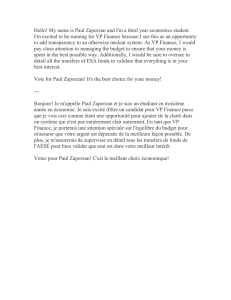
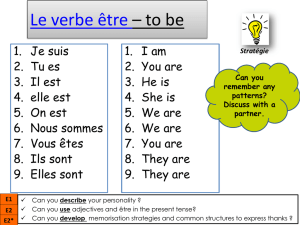
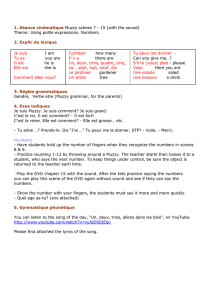
![The Enzymes, Chemistry and Mechanism o] Action, edited by](http://s1.studylibfr.com/store/data/004040712_1-47306fdc4a3811eb8dd0f228af791e56-300x300.png)
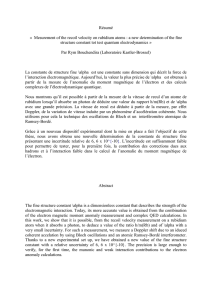
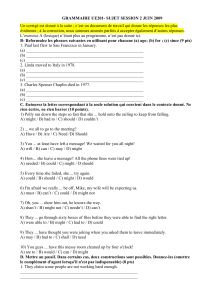
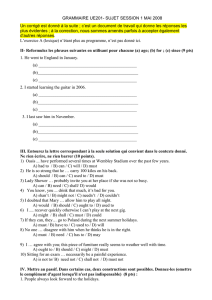

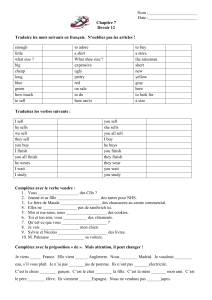
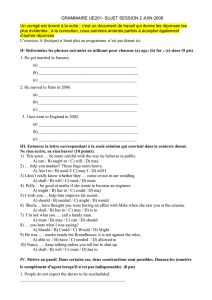
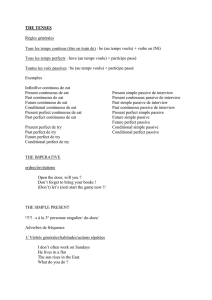
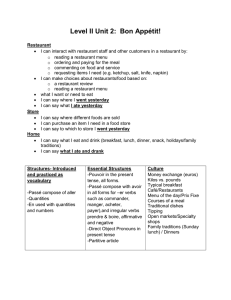
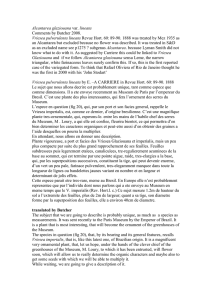
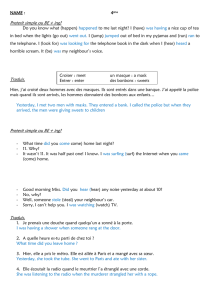
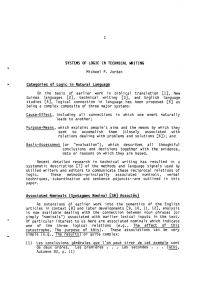
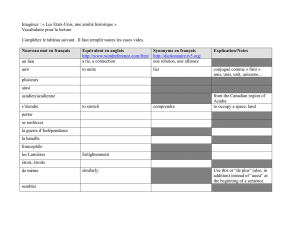

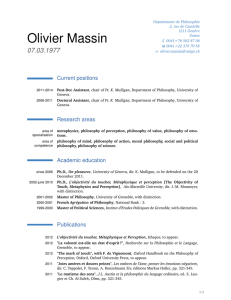
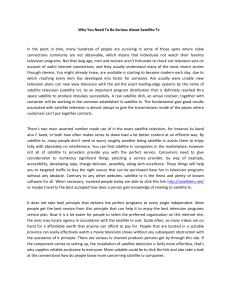
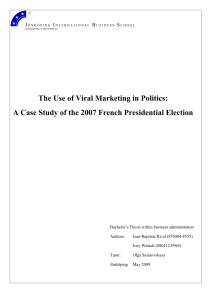
![[Walter Lippmann] Public Opinion(BookZZ.org) (2)](http://s1.studylibfr.com/store/data/010080104_1-6e5bd75731ae3f4603b4f04e993da983-300x300.png)